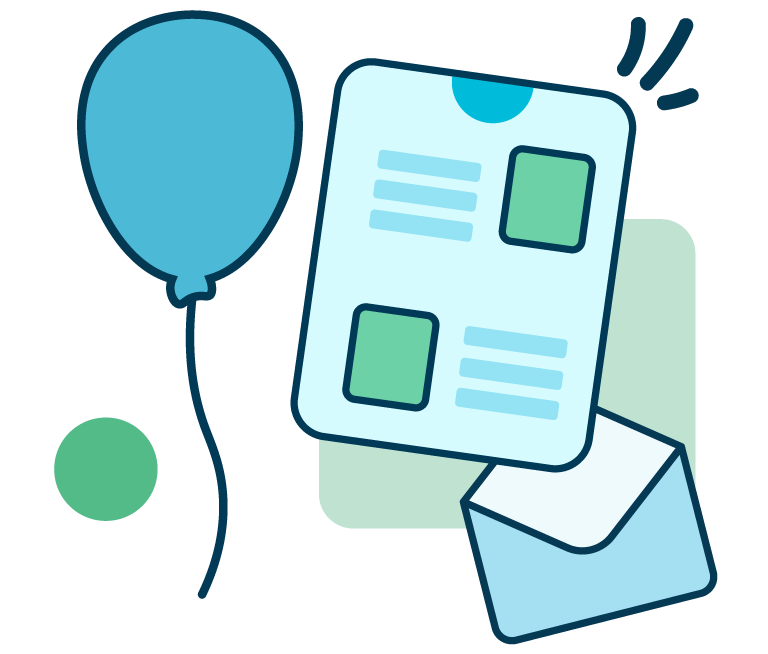Click maps: what they are and how they can improve engagement

Are you familiar with heat maps? These are a way to representdata graphically, with colours representing individual values. They are used inmany fields, from journalism to sport and marketing.
Clickmaps are nothing more than a derivative ofheat maps: they are tools that provide the reader with the so-called “click geography”; in otherwords, they offer a quantitative view of click distribution across a page or email.
In this post, we will deep dive intoclick maps to understand how theyhelp marketers get a comprehensive view of results and improvethe engagement level ofemails.

From developing integrations to strategic support, from creating creative concepts to optimizing results.
MailUp click maps
How do my recipients interact withemails? Where do they click? On images, calls to action or text? This isprecisely what the MailUp platform tellsyou by providing an overview of the clicks for each individual campaign.
You can find the feature via thefollowing: Statistics > Emails > All messages > Clicks >Link tracking. You will then find a copy of your email with the click distribution for each linkinserted above. You can display the results in two ways:
- Number of clicks
- Percentage of clicks
As mentioned, representing clicks inthis way has the major advantage of offering a general and immediate overviewof recipients’ engagement.This ismacro-information that can be used to understand if certain strategic aspects are working orneed recalibrating. Let’s look at how click maps can help.
Make sure the content hierarchy reflects the results
Let’s take one of our latest newsletters as an example:

As you can see, the newsletter hasa rather marked hierarchy whichplaces certain content in a clearly prominent position and other content onsecondary levels.
This choice is obviously in line with a specific strategy. First of all, we need to verify that the click distribution matches this hierarchy and that most of the interactions are therefore related to the main content, i.e. the content in the email header.

The click map tells us that the hero content got 13,2% of clicks, compared to 9,6% for the secondary content. In short: goal achieved.
Find out if the layout makes the most of all (and we mean all) the content
A best practice in the world of emailmarketing is not to overload your directemails and newsletters with content so as not to water down yourrecipients’ attention with an endless stream of suggestions and ideas.
Many campaigns aim to have the recipientscroll through the entire email, interactingwith all the content, even items placed at the very end of themessage. Here too, click maps are a useful tool to help us understand thenumber and percentage of interactions recorded for the content at the bottom ofthe hierarchy.
If the map shows limited, excessivelylow or zero interaction, it might be a good idea to review the email layout, remodelling the design and establishing amore functional hierarchy. Alternatively, you could also decide to cut down the amount of content. Because content that recipients tend to ignoreis useless. It’s like firing blanks.
Creativity Suite
The Creativity Suite offers a creative and technical team dedicated to your campaigns: from graphic design and HTML analysis all the way through to creating tailored forms and landing pages.
DESIGN EFFECTIVE COMMUNICATION
Find out which topics your audience is most interested in
As we’ve said, the major advantage ofclick maps lies in offering an immediate and intuitive snapshot of results. Allit takes is a glance to understandhow recipients’ clicks are distributed within your email.
Click maps can therefore be extremelyuseful in getting an overview of whichtypes of content your audience engages with most. More interaction witha specific theme or a certain format could be a clear sign of a widespread preference, whichyou can accommodate in future emails to obtain even higher levels ofengagement.
Experiment with A/B tests to improve click geography
Click map analysis brings us to one of the most valuable tools available to marketers: the A/B test, where we can compare two versions of the same email to understand which elements of it – including design, images and text – get the biggest response from recipients.
If you want to improve click rates, most tests will inevitably focus on the call to action, which could be described as the “gateway to conversion”. Here are the aspects of the call to action that can be tested:
- Colour
Contrasting or in sync with the dominant colours of the email? In contrast or in line with the brand identity - Size
Proportionate to other design elements or strongly emphasised relative to the whole? - Special effects
Is it better to use rounded or sharp corners? Three-dimensional effects or a flat design? Add shadows or avoid depth effects altogether - Number of CTAs
Is it better to focus on a single call to action or diversify by including two? - Wording
Is it better to be direct with the message or more subtle (the classic example: Buy now vs Add to basket)? Is it better to be concise or a little more descriptive?
Discover the best angle for your copy
And it’s not just calls to action. Clickmaps are a useful ally to shedlight on the copy, i.e. on how the text and titles of the content affect recipients’ engagement.
There are many ways to present content:you can be concise and pithyor thorough to the pointof being educational, or perhaps sarcastic,playful, or even ultra-technical.
Click maps will help you understandwhich register is most effective for your audience.
In conclusion
Click maps mirror your recipients’engagement. Some of MailUp’s brand-new features, which will be launchingover the coming weeks,willfocus on engagement. As we say inthese cases, stay tuned.
If you’re still not familiar with MailUp, why not try the platform for free for 30 days? You’ll have plenty of time to create, send and track your campaigns.